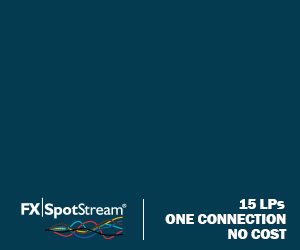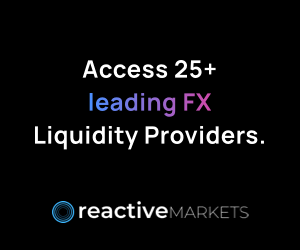The Last Look…
Posted by Colin Lambert. Last updated: November 21, 2023
There is a school of thought that rather than what many expected – automation in FX swaps will precede FX options – the opposite may actually occur, namely FX options will overtake and push ahead quicker.
I will confess that my trips to the US and UK over the past six weeks certainly saw FX options figure higher in my conversations than perhaps I thought it would, but there are nuances that need to be understood before making any grand statement.
Certainly, I believe that those pushing automation in FX options are facing less resistance from incumbents than their peers in FX swaps. I have mentioned before that there is a subset of FX swaps traders that are reactionary, and view e-trading with something more than suspicion – indeed someone said to me recently that that mood is infecting a younger generation, who hold the same view – and that is, no doubt, partly responsible for a slower take up than forecast in e-trading.
Meanwhile, FX options traders, with perhaps a more quant background (and predecessors in senior positions in the overall e-FX business) are more open to the benefits. It is probably also noteworthy that FX options traders have a lot more detail to attend to than swaps traders, therefore automation can help them with a lot of the regular tasks involved in pricing.
The reality is, of course, that both markets are automating, maybe not at pace, but certainly in steady fashion, but which one is moving faster?
The answer depends upon if you look at the market overall, or segments of it. In the dealer-to-client space, I would argue that FX swaps is already largely automated, a large number of buy side firms execute on a platform of some sort and most players are able to publish a pricing curve on a streaming basis. In FX options, meanwhile, the more bespoke nature of the product, means that automation is only really just getting going – but it is making some noise.
In the inter-dealer space, both remain, anecdotally, largely manual, with voice brokers still dominant at around 40% in FX swaps and 20% of volume in FX options. In swaps, the initiatives around the inter-dealer space continue to work their way into the consciousness of the market, in options, we still really await the first dealer-to-dealer platform that isn’t hybrid.
The driver of change – whether the people on the dealers’ desks like it or not – will be regulation, however we remain in the early stages of change. Certainly options are prepared for clearing better than swaps – again it is regulatory-driven – but the latter is not far behind. The capital impact of the regulations will also play out to a larger degree I suspect in swaps than in options, and that may drive change quicker.
The return of volatility and interest rate differentials is providing a boost to both markets and this may, if revenues remain strong, provide something of a obstacle in the automation process, but the direction of travel is clear. And this brings me to the question raised at the start – will the FX options market overtake FX swaps in the automation stakes?
I will admit to being genuinely surprised at the number of people talking to me about what they were doing in FX options, and there seems to be more enthusiasm for automation there in general
At face value, I don’t think so. The noise we are hearing in FX options is very much down to it being the first stage – automation on the client side always attracts more attention – but it remains significantly behind the FX swaps market. In the inter-dealer space, which dominates both markets, swaps is again in front in terms of the technology offerings, but in terms of dealer support, it is much more even.
One thing that should not be overlooked is momentum. I will admit to being genuinely surprised at the number of people talking to me about what they were doing in options, and there seems to be more enthusiasm for automation there in general. This could create a much more urgent catalyst for change, largely because the dealers at the centre of the business are on-board.
The bottom line of course, is that I don’t believe any sceptic of automation in either market will survive very long – even if they are making a shedload of money – because the biggest beast of all, the customer base, is waking up to the benefits.
Ultimately, in both markets it is a workflow matter, because all sides benefit from greater efficiency in processing. To get there means more e-trading, and for all the hold-outs in the industry at the moment, traders (and sales) in FX swaps and options better get used to using the technology. It has already been proven that, providing skill sets can be adjusted, automation doesn’t diminish the number of people working in the business – thus it really becomes a question for each individual; do they want to be part of the industry going forward?




